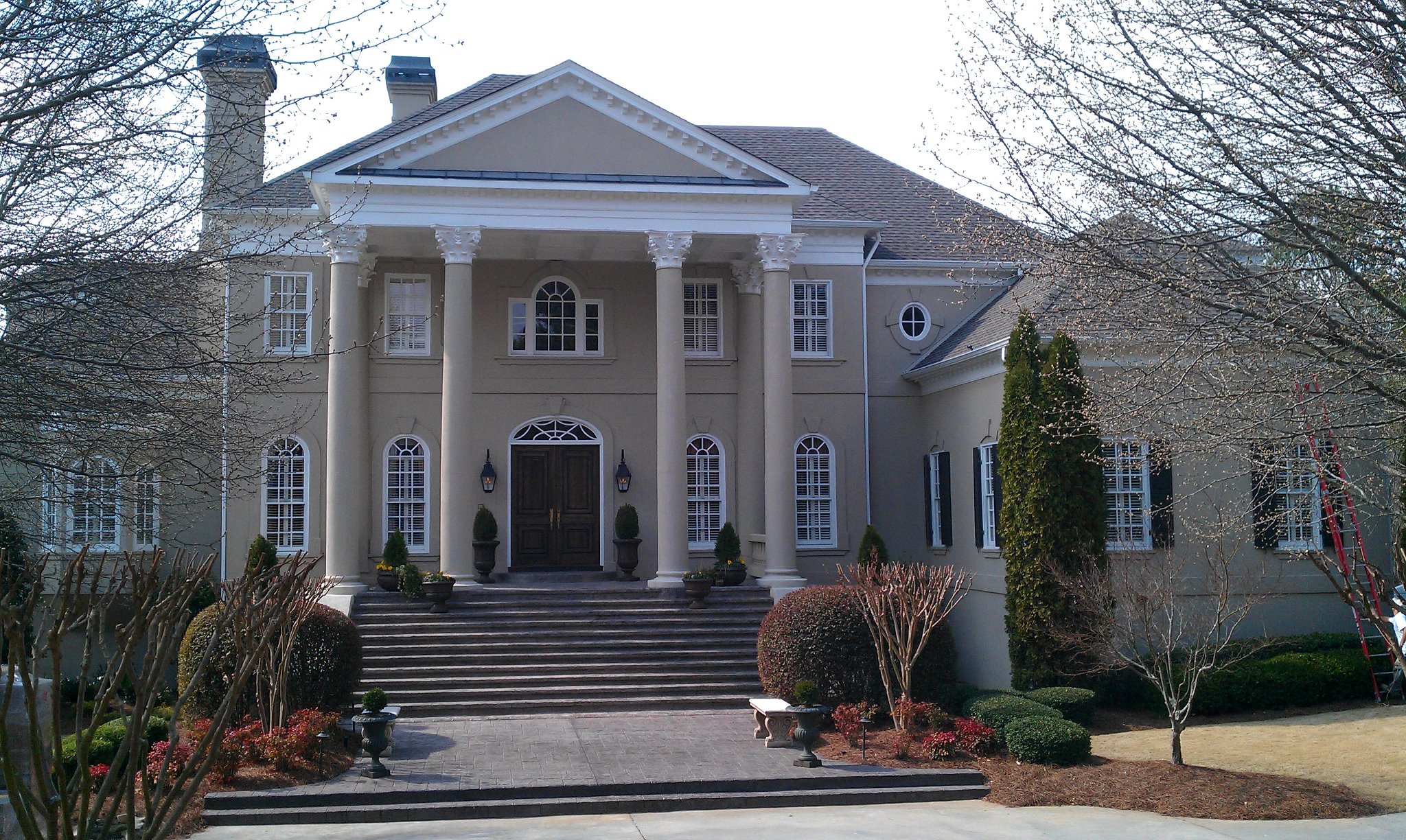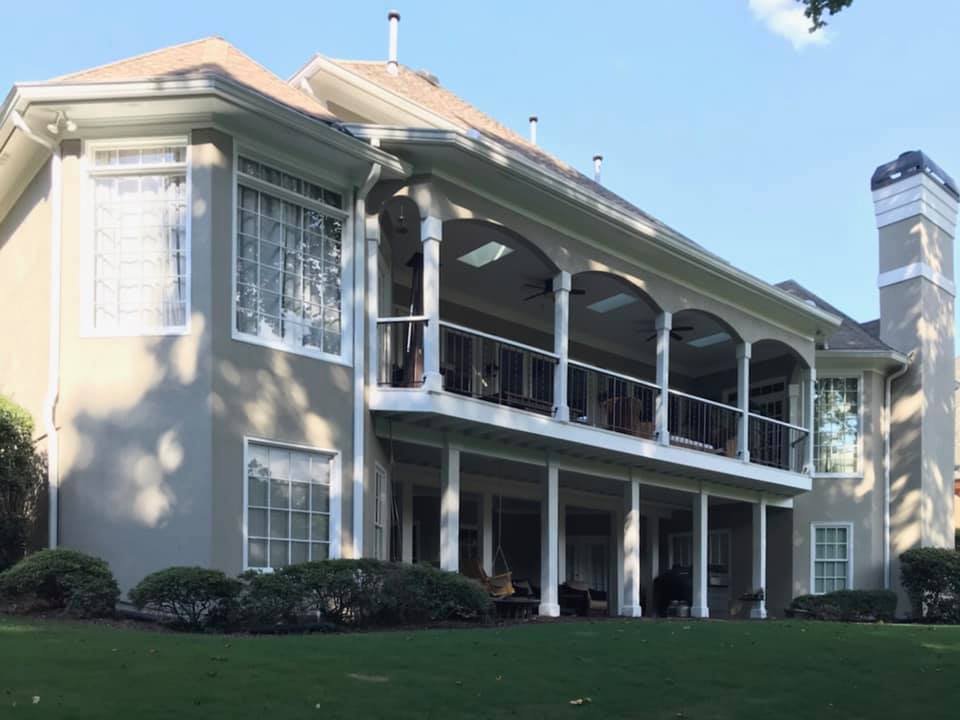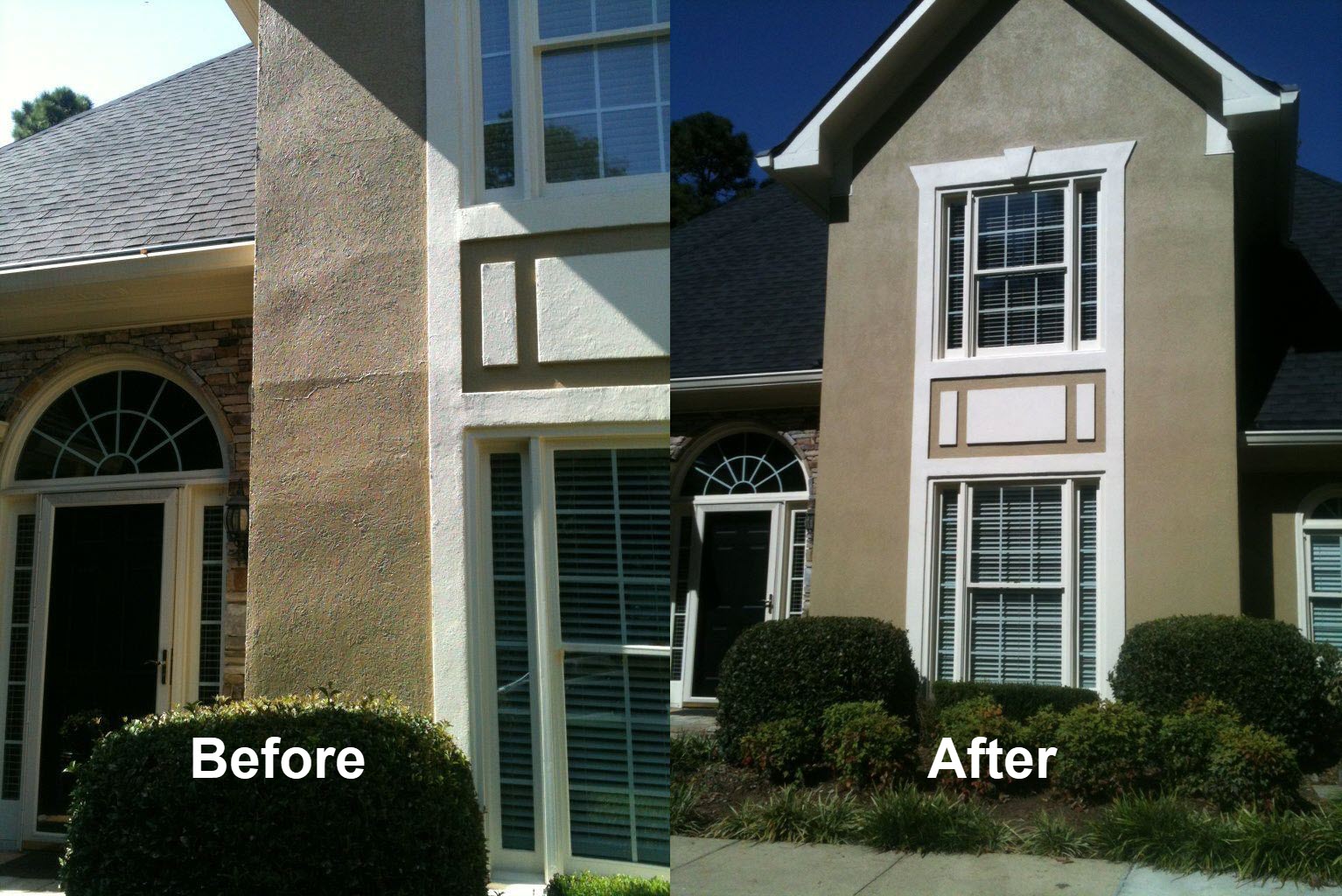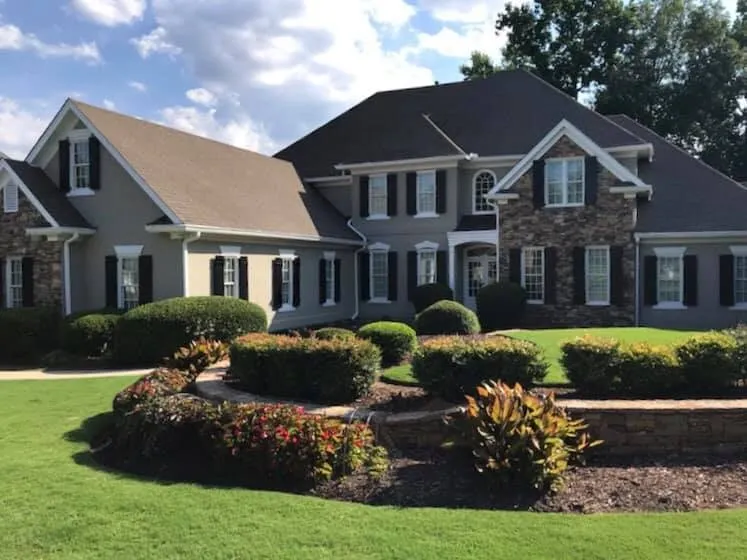Dryvitin Athens GA
Discover the Durability and Beauty of Dryvit Finishes
We Are Locally Owned & Operated For Over 24 Years
We Serve Businesses In And Around The Following Cities:
About Dryvit in Athens, Georgia
Understanding Dryvit Stucco and EIFS for Installation and Repair in Athens Georgia
The Role of Dryvit and Advanced Stucco Repair in Athens Georgia
Nestled in the heart of Georgia, Athens is a city that combines historical charm with modern living. For property owners, maintaining the aesthetic appeal and structural integrity of buildings, both residential and commercial, is critical. Dryvit, a key player in the Exterior Insulation and Finish Systems (EIFS), serves as an essential component in this architectural endeavor. This comprehensive exploration seeks to unravel how Dryvit stucco, along with the expertise of Advanced Stucco Repair, becomes indispensable in the installation and repair landscape within Athens.
The concept of Dryvit stucco is rooted in sophisticated exterior cladding technology known as EIFS. Dryvit systems are sought-after for their superior energy efficiency, longevity, and aesthetic versatility. For residents of Athens, where the blend of old and new is a defining character, maintaining this unique architectural dialogue often leans heavily on the capabilities of materials like Dryvit. Advanced Stucco Repair, a reputable name in the industry, provides not only installation services but also skilled repair solutions, ensuring the structures can stand the test of time.
Demystifying Dryvit Systems and Their Advantages
When discussing the merits of Dryvit, it's vital to highlight its unique components and applications that make it a standout choice for building exteriors. The Dryvit system is essentially a lightweight synthetic cladding that includes foam insulation board, a fortified base coat complete with fiber mesh reinforcement, and a textured protective finish. This system not only enhances a building’s aesthetic appeal but also significantly boosts its energy efficiency.
In Athens, Georgia, a region that experiences distinct seasons, the thermal efficiency afforded by Dryvit comes as an invaluable benefit. Buildings clad with Dryvit insulation systems are adept at minimizing energy transfer, ensuring interiors remain comfortable throughout the year without incurring exorbitant utility costs. This is a crucial factor for commercial establishments that prioritize energy efficiency as a component of their operational strategy.
The Nuances of Dryvit Installation Process
For those considering the Dryvit system in their architectural projects within Athens, understanding the installation process is fundamental. Installing Dryvit involves several meticulous steps, each requiring precision to ensure optimal performance and longevity. In the hands of skilled professionals from Advanced Stucco Repair, the installation process adheres to strict guidelines, beginning with the preparation of the building surface, attaching the insulation board, applying the base coat, and finally the stucco finish.
The actual application of Dryvit stucco is a methodical layering process that starts with securing the insulation board onto the wall assembly. This is followed by the application of a base coat that serves as a bonding layer. Reinforcement mesh is then embedded into this layer to enhance durability, a critical step in ensuring the façade can withstand environmental stresses. The textured Dryvit stucco finish is then applied, bringing both aesthetic value and structural protection to the fore. Each layer plays a pivotal role in the system’s defensive and insulative capabilities.
Facilitating Efficient Dryvit Repair Solutions
Despite its robustness, there come times when a Dryvit system might require professional repair interventions. Athens property owners often turn to experts like Advanced Stucco Repair for these services due to their comprehensive understanding of Dryvit specifics. Repairing Dryvit involves addressing issues like cracks, delamination, or moisture infiltration, which, if left unchecked, could compromise the system’s performance.
Effective Dryvit repair centers around identifying the root causes of damage and applying tailored solutions. For instance, cracks in the Dryvit stucco can stem from structural shifts or environmental factors and must be addressed promptly. Advanced Stucco Repair employs cutting-edge techniques to repair and restore the integrity of the Dryvit system, ensuring that the property not only retains its visual appeal but also its energy efficiency and protective capabilities.
Real-World Applications and Benefits for Property Owners
The use of Dryvit systems extends beyond mere wall coverage; it is integral to sustainable building practices and operational efficiency, making it a common choice for Athens’ diverse array of buildings. The economic efficiency of Dryvit, a significant consideration for property developers and owners alike, cannot be overstated. For commercial properties, reduced energy consumption translates directly to cost savings. Moreover, the visually appealing façade offered by Dryvit can enhance a building's market value and tenant appeal.
Advanced Stucco Repair’s expertise ensures that these benefits are maximized across residential and commercial projects. Their proficiency in deploying Dryvit solutions not only ensures maintenance of structural integrity but also significantly extends the lifespan of the building envelope. The aesthetic flexibility of Dryvit is another appealing feature, offering property owners in Athens numerous design options that can give their structures a distinctive look that aligns with both modern trends and classical influences present in the city.
Commercial Properties: Maximizing Aesthetic and Functional Value
Commercial properties in Athens often need materials that offer both aesthetic flexibility and sturdy protection against various elements. Dryvit provides a unique solution that meets these needs. For instance, shopping plazas, office complexes, and hospitality venues frequently opt for Dryvit systems due to their versatility and resilience. The ability to replicate traditional stucco textures or modern smooth finishes allows these commercial entities to maintain an appealing aesthetic that can attract clients and patrons alike.
Incorporating Dryvit into commercial buildings can also significantly improve thermal insulation, which is not just a cost-saving feature but a crucial aspect of creating environmentally sustainable operations. Advanced Stucco Repair plays a vital role in ensuring that the installation adheres to best practices, leveraging their expertise to cater to specific client needs while optimizing the long-term performance of the buildings.
Residential Impacts: Enhancing Comfort and Energy Efficiency
For residential properties in Athens, Dryvit systems provide a means to enhance both indoor comfort and property curb appeal. Homeowners are increasingly drawn to the benefits of improved insulation that reduces heating and cooling expenses while keeping living spaces cozy. Furthermore, Dryvit sidings offer a range of finishes that empower homeowners to align their exteriors with personal style preferences.
The choice of a trusted contractor like Advanced Stucco Repair ensures that Dryvit installations in residential settings meet the highest standards of craftsmanship. Whether it’s a new installation or replacing aging exteriors, their innovative approach ensures that homes are fortified against the ever-changing weather conditions typical of Georgia while also achieving an aesthetically pleasing appearance. This combination of functional efficacy and visual appeal is why many Athens homeowners prefer to engage with experts in the field who can deliver tailored Dryvit solutions.
The Vital Role of Local Expertise and Professional Services
In any building modification or repair project, the role of skilled artisans cannot be undermined. Local expertise becomes even more critical for specialized systems like Dryvit, where the nuances of installation and repair demand a deep understanding of both the material and its interaction with local climatic conditions. Advanced Stucco Repair, with its rich experience in the Athens region, embodies this proficiency, offering services that are reliable, efficient, and customer-focused.
Their team’s knowledge extends beyond basic installation, delving into the intricacies of EIFS systems. This deep-rooted expertise ensures that potential challenges are promptly addressed, and solutions are specifically tailored to safeguard both the structural and aesthetic integrity of Athens buildings. Engaging Advanced Stucco Repair translates to peace of mind, knowing that the care and precision required in handling Dryvit systems are vigilantly adhered to during every phase of the project.
As buildings in Athens continue to integrate modern insulation technologies and embrace sustainable practices, Dryvit remains at the forefront as a solution that elegantly combines energy efficiency, aesthetics, and functional resilience. For the proactive property owner, the overarching goal is to remain ahead, leveraging efficient cladding systems such as Dryvit that not only meet present needs but anticipate future demands. Advanced Stucco Repair offers a bridge to these advanced solutions, ensuring a seamless journey from initial consultation to project completion.
Ultimately, whether you are a homeowner seeking to enhance the aesthetic appeal of your residence or a commercial entity aiming to optimize energy efficiency while maintaining structural reliability, Dryvit provides a versatile and reliable solution. With Advanced Stucco Repair at your service, your Athens property is poised to benefit from expertly handled installations and meticulous repairs that preserve and enhance its value for years to come.
Dryvit Gallery



Call Us Today to receive your Free Quote for
Dryvit in Athens
Serving: Athens, Georgia

About Athens, Georgia
In the late 18th century, a trading settlement on the banks of the Oconee River called Cedar Shoals stood where Athens is today. On January 27, 1785, the Georgia General Assembly granted a charter by Abraham Baldwin for the University of Georgia as the first state-supported university. Georgia's control of the area was established following the Oconee War. In 1801, a committee from the university's board of trustees selected a site for the university on a hill above Cedar Shoals, in what was then Jackson County. On July 25, 1801, John Milledge, one of the trustees and later governor of Georgia, bought 633 acres from Daniel Easley and donated it to the university. Milledge named the surrounding area Athens after the city that was home to the Platonic Academy of Plato and Aristotle in Classical Greece.
The first buildings on the University of Georgia campus were made from logs. The town grew as lots adjacent to the college were sold to raise money for the additional construction of the school. By the time the first class graduated from the university in 1804, Athens consisted of three homes, three stores, and a few other buildings facing Front Street, now known as Broad Street. Completed in 1806 and named in honor of Benjamin Franklin, Franklin College was the first permanent structure of the University of Georgia and the city of Athens. This brick building is now known as Old College.
Athens officially became a town in December 1806 with a government made up of a three-member commission. The university and town continued to grow with cotton mills fueling the industrial and commercial development. Athens became known as the "Manchester of the South" after the city in England known for its mills. In 1833, a group of Athens businessmen led by James Camak, tired of their wagons getting stuck in the mud, built one of Georgia's first railroads, the Georgia, connecting Athens to Augusta by 1841, and to Marthasville (now Atlanta) by 1845. In the 1830s and 1840s, transportation developments and the growing influence of the University of Georgia made Athens one of the state's most important cities as the Antebellum Period neared the height of its development. The university essentially created a chain reaction of growth in the community which developed on its doorstep.
During the American Civil War, Athens became a significant supply center when the New Orleans armory was relocated to what is now called the Chicopee building. Fortifications can still be found along parts of the North Oconee River between College Avenue and Oconee Street. In addition, Athens played a small part in the ill-fated "Stoneman Raid" when a skirmish was fought on a site overlooking the Middle Oconee River near what is now the old Macon Highway. A Confederate memorial that used to stand on Broad Street near the University of Georgia Arch was removed the week of August 10, 2020.
During Reconstruction, Athens continued to grow. The form of government changed to a mayor-council government with a new city charter on August 24, 1872, and Henry Beusse was elected as the first mayor of Athens. Beusse was instrumental in the city's rapid growth after the Civil War. After serving as mayor, he worked in the railroad industry and helped bring railroads to the region, creating growth in many of the surrounding communities. Freed slaves moved to the city, where many were attracted by the new centers for education such as the Freedmen's Bureau. This new population was served by three black newspapers: the Athens Blade, the Athens Clipper, and the Progressive Era.
In the 1880s, as Athens became more densely populated, city services and improvements were undertaken. The Athens Police Department was founded in 1881 and public schools opened in the fall of 1886. Telephone service was introduced in 1882 by the Bell Telephone Company. Transportation improvements were also introduced with a street paving program beginning in 1885 and streetcars, pulled by mules, in 1888.
By the centennial in 1901, Athens had experienced a century of development and growth. A new city hall was completed in 1904. An African-American middle class and the professional class grew around the corner of Washington and Hull Streets, known as the "Hot Corner", where the Morton Building was constructed in 1910. The theater at the Morton Building hosted movies and performances by black musicians such as Louis Armstrong, Cab Calloway, and Duke Ellington. In 1907, aviation pioneer Ben T. Epps became Georgia's first pilot on a hill outside town that would become the Athens-Ben Epps Airport.
The last, and perhaps only, lynching in Athens occurred on February 16, 1921, when a mob of 3,000 people attacked the Athens courthouse and carried off John Lee Eberhart. Eberhart had been arrested for the murder of his employer, Ida D. Lee, with a shotgun in Oconee County. That night, he was driven back to the Lee farm where a mock trial was held. Though he refused to confess, he was tied to a stake and burned to death. The lynching received widespread attention.
During World War II, the U.S. Navy built new buildings and paved runways to serve as a training facility for naval pilots. In 1954, the U.S. Navy chose Athens as the site for the Navy Supply Corps school. The school was in Normaltown in the buildings of the old Normal School. It closed in 2011 under the Base Realignment and Closure process. The 56 acre site is now home to the Health Sciences Campus, which contains the University of Georgia/Medical College of Georgia Medical Partnership, the University of Georgia College of Public Health, and other health-related programs.
In 1961, Athens witnessed part of the civil rights movement when Charlayne Hunter and Hamilton Holmes became the first two black students to enter the University of Georgia. Despite the Brown vs. Board of Education Supreme Court ruling in 1954, the Athens–Clarke County school district remained segregated until 1964.
According to the United States Census Bureau, the balance has a total area of 118.2 square miles (306.1 km), of which 117.8 square miles (305.1 km) is land and 0.5 square miles (1.3 km) (0.41%) is water.
Athens lies within the humid subtropical climate zone, with hot, humid summers and mild to moderately cold winters. Annual rainfall averages 49.7 inches (1,260 mm). Light to moderate sporadic snowfall occasionally can occur in winter. In the spring, sporadic thunderstorms can occasionally become severe, rarely producing tornadoes. The city sits on a series of hills, unique to the Piedmont region.
Athens has a humid subtropical climate. Its climatic regime is typical of that of the Southeastern United States, with hot summers transitioning into cool winters, with precipitation consistently high throughout the year. Normal monthly temperatures range from 43.5 °F (6.4 °C) in January to 80.6 °F (27.0 °C) in July; on average, maxima reach 90 °F (32 °C) or higher and stay below 40 °F (4 °C) on 58 and 5.8 days annually, and there are 48 days annually with a minimum at or below freezing.
Official record temperatures range from −4 °F (−20 °C) on January 21, 1985 to 109 °F (43 °C) on June 29, 2012; the record cold daily maximum is 18 °F (−8 °C) on January 30, 1966, while, conversely, the record warm daily minimum is 79 °F (26 °C) as recently as August 11, 2007. Temperatures rarely fall below 10 °F (−12 °C), having last occurred January 7, 2014. The average window for freezing temperatures is November 5 to March 24, allowing a growing season of 225 days.
Precipitation is relatively well spread (though the summer months are slightly wetter), and averages 46.3 inches (1,180 mm) annually, but has historically ranged from 28.61 in (727 mm) in 1954 to 71.39 in (1,813 mm) in 1964. Snowfall is sporadic, averaging 2.9 inches (7.4 cm) per winter, but has reached 13.6 inches (34.5 cm) in 2010–2011.
| Census | Pop. | Note | %± |
|---|---|---|---|
| 1810 | 273 | — | |
| 1850 | 1,661 | — | |
| 1860 | 3,848 | 131.7% | |
| 1870 | 4,251 | 10.5% | |
| 1880 | 6,099 | 43.5% | |
| 1890 | 8,639 | 41.6% | |
| 1900 | 10,245 | 18.6% | |
| 1910 | 14,913 | 45.6% | |
| 1920 | 16,748 | 12.3% | |
| 1930 | 18,192 | 8.6% | |
| 1940 | 20,650 | 13.5% | |
| 1950 | 28,180 | 36.5% | |
| 1960 | 31,355 | 11.3% | |
| 1970 | 44,342 | 41.4% | |
| 1980 | 42,549 | −4.0% | |
| 1990 | 45,734 | 7.5% | |
| 2000 | 100,266 | 119.2% | |
| 2010 | 115,452 | 15.1% | |
| 2020 | 127,315 | 10.3% | |
| U.S. Decennial Census 1850-1870 1870-1880 1890-1910 1920-1930 1940 1950 1960 1970 1980 1990 2000 2010 2020 | |||
| Race / Ethnicity (NH = Non-Hispanic) | Pop 2000 | Pop 2010 | Pop 2020 | % 2000 | % 2010 | % 2020 |
|---|---|---|---|---|---|---|
| White alone (NH) | 61,950 | 65,747 | 71,258 | 61.79% | 56.95% | 55.97% |
| Black or African American alone (NH) | 27,284 | 30,441 | 31,129 | 27.21% | 26.37% | 24.45% |
| Native American or Alaska Native alone (NH) | 160 | 138 | 297 | 0.16% | 0.12% | 0.23% |
| Asian alone (NH) | 3,147 | 4,807 | 4,894 | 3.14% | 4.16% | 3.84% |
| Pacific Islander alone (NH) | 41 | 48 | 65 | 0.04% | 0.04% | 0.05% |
| Some Other Race alone (NH) | 167 | 270 | 976 | 0.17% | 0.23% | 0.77% |
| Mixed Race or Multi-Racial (NH) | 1,115 | 1,872 | 4,452 | 1.11% | 1.62% | 3.50% |
| Hispanic or Latino (any race) | 6,402 | 12,129 | 14,244 | 6.39% | 10.51% | 11.19% |
| Total | 100,266 | 115,452 | 127,315 | 100.00% | 100.00% | 100.00% |
As of the 2020 United States census, there were 127,315 people, 51,640 households, and 23,615 families residing in the city. As of the census of 2010, there were 100,266 people, 39,239 households, and 19,344 families residing in the city. The population density was 851.5 inhabitants per square mile (328.8/km). There were 41,633 housing units at an average density of 353.6 units per square mile (136.5 units/km). The racial makeup of the city was 64.71% White, 27.37% Black or African American, 0.21% Native American, 3.15% Asian, 0.04% Pacific Islander, 3.11% from other races, and 1.41% from two or more races. Hispanic or Latino of any race were 6.39% of the population.
The large population increase from 1990 to 2000 reflects the city's expanded boundaries that came with the consolidation of Athens and Clarke County, and not merely an influx of new residents. Since that time the population has increased an average of 12.7% every ten years.
There were 39,239 households, of which 22.3% had children under 18 living with them, 32.3% were married couples living together, 13.3% had a female householder with no husband present, and 50.7% were non-families. 29.9% of all households were made up of individuals, and 5.8% had someone living alone who was 65 years of age or older. The average household size was 2.35 and the average family size was 2.95.
In the city, 17.8% of the population was under the age of 18, 31.6% was from 18 to 24, 27.3% from 25 to 44, 15.3% from 45 to 64, and 8.0% was 65 years of age or older. The median age was 25 years. For every 100 females, there were 95.4 males. For every 100 females age 18 and over, there were 93.4 males.
The median income for a household in the city was $28,118, and the median income for a family was $41,407. Males had a median income of $30,359 versus $23,039 for females. The per capita income for the balance was $17,103. About 15.0% of families and 28.6% of the population were below the poverty line, including 25.2% of those under age 18 and 13.5% of those age 65 or over.
This section needs expansion. You can help by adding to it. (March 2009) |
In 1990, the City of Athens and Clarke County voters voted to unify their governments, becoming only the second unified government in Georgia and the 28th nationwide.
- Legislative: The government is headed by an elected mayor and 10 elected commissioners from 10 equally divided districts. Previously, they have been formed from 8 geographical districts and two super-districts covering districts 1–4 and 5–8
- Executive: The Unified Government of Athens-Clarke County's day-to-day operations is overseen by a manager appointed by the Mayor and Commission. There are 24 main departments, divisions, and offices under the managerial group.
- Judicial: Athens-Clarke County houses Magistrate, Juvenile, Municipal, Probate, State, and Superior Courts. Superior Court covers the Western Judicial Circuit, which also includes Oconee County.
The Clarke County School District supports grades pre-school to grade twelve. The district consists of fourteen elementary schools, four middle schools, and three high schools (one non-traditional). The district has 791 full-time teachers and 11,457 students as of 2010.
- Athens Academy (grades K-12)
- Athens Christian School (grades K-12)
- Athens Montessori School (grades K-8)
- Downtown Academy (grades K-3)
- Joy Village School (grades K-8)
- Saint Joseph Catholic School (grades K-8)
- Monsignor Donovan Catholic High School (grades 9–12)
- Double Helix STEAM School (grades 5–8)
- Al Huda Islamic Center of Athens Sunday School (5 years and older)
- The University of Georgia (UGA), an R1 Doctoral University with very high research activity, is the state's flagship research university, the oldest institution of higher learning in Georgia and, founded in 1785, it is the first state-chartered university in the United States.
- Athens Technical College is a Technical College System of Georgia public college. It offers certificates, diplomas, and associate degrees in business, health, technical, and manufacturing-related fields.
- Augusta University (AU) through its Medical College of Georgia has a Medical Partnership with the University of Georgia housed at the University of Georgia Health Science Campus, and the AU College of Nursing has had a campus in Athens since 1974.
- Piedmont University, a private liberal arts institution, established a campus in Athens in 1995 that now is on Prince Avenue in the Normaltown neighborhood.
- College of Athens (CoA) is a private Christian college that was established in 2012. CoA currently offers certificates, undergraduate, and graduate degrees in nine various major areas.
